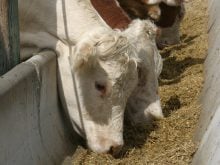The United States should look for a peaceful solution to reforming its mandatory country-of-origin labelling law rather than pushing for a prolonged fight with its trading partners.
Canada and Mexico challenged the law in 2008 and last November, the World Trade Organization ruled it was not in compliance with international trade agreements.
“The WTO ruling was highly expected and I encourage the U.S. to recognize fighting that probably is unwise. I think the free market can address the issue of providing information such as origin quite well,” said Glynn Tonsor, a beef economist with Kansas State University.
Read Also

Farmers asked to keep an eye out for space junk
Farmers and landowners east of Saskatoon are asked to watch for possible debris in their fields after the re-entry of a satellite in late September.
“Canada and others, who led the complaint discussion, are being rather reasonable,” he said during a Feb. 7 webinar.
However, Canada expects the United States to announce March 23 it will appeal the ruling, said John Masswohl of the Canadian Cattlemen’s Association.
“The United States is likely going to appeal it so we are preparing for the appeal,” he said.
Preliminary results of the consumer survey from Kansas and Oklahoma state universities found little awareness about COOL among the 2,000 consumers interviewed.
The survey did not include agriculture producers.
It found more than 60 percent did not know the law existed for retailers to label fresh red meat and produce. A majority said they did not read the labels. However, nearly half said the law should be repealed or adjusted to bring it into compliance with WTO guidelines while one-third of those polled favoured economic conciliations to compensate Canada and Mexico.
Under the WTO, Canada and Mexico could place tariffs or sanctions on other agricultural or non-agricultural products, said Tonsor.
How COOL was COOL?
An analysis of the impacts of country-of-origin labelling released by the Canadian Cattlemen’s Association in January said weekly fed cattle prices from 2005 through 2010 and full years through September 2009 found the labelling requirement widened the negative price basis for fed cattle by about 30 percent of the initial basis, or about $4 per hundredweight.
Based on the live weight of a typical animal of about 1,200 lb., it works out to a price difference of about $48 per head for Canadian fed cattle.
Overall, COOL caused a loss of U.S. imports of Canadian feeder cattle of about 480,000 head in the first 80 weeks after the measure came into effect. That is an estimated reduction of 6,000 head per week. Before COOL, the average weekly feeder cattle exports were 10,494 head in 2007 and 8,372 head in 2006.
















